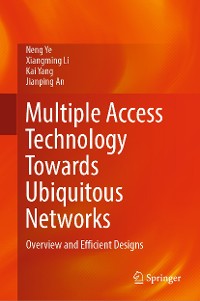Multiple Access Technology Towards Ubiquitous Networks
Kai Yang, Xiangming Li, Neng Ye, et al.
Naturwissenschaften, Medizin, Informatik, Technik / Elektronik, Elektrotechnik, Nachrichtentechnik
Beschreibung
This book investigates the multiuser communication and its key technology—multiple access technology, as well as transceiving design methods. Multiple access methods toward B5G and 6G currently allows the superposition transmissions of multiuser signals with controllable mutual interference. By deploying advanced multiuser detector, current technology significantly enhances the connectivity, improves the spectral efficiency and simplifies the signaling interactions. Considering that the major challenge of current multiple access technology is the design of transceiver due to the overlapped and distorted signals from multiple users, we analyze the promising candidate multiple access schemes and then develop some sights on how to formulate the transmit signals and how to achieve efficient symbol recovery. Specifically, the incorporation of constellation rotation, rate splitting and deep learning techniques in enhancing the transmission efficiency of multiple access technology are considered.
Kundenbewertungen
Constellation Design, Multiple Access, Deep Learning, Artificial Intelligence, Transceiver Design, Rate Splitting, Multi-user Detection, Non-orthogonal Multiple Access, Grant Free















































